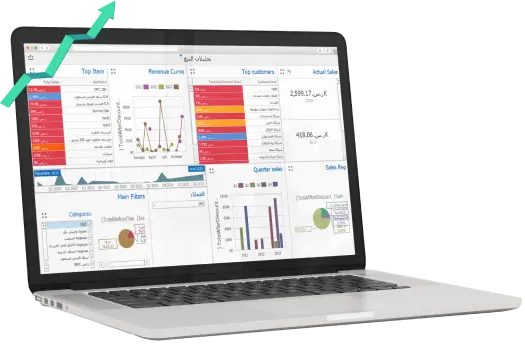In the beginning, any project needs funding to purchase the equipment and machinery, build a factory, purchase the raw materials, cover the operating expenses, etc. in the present day, there are many sources of finance, and each company has a different financial structure depending on the nature of its activity, its size, and the financing decision in the company is important because based on it the appropriate financial structure is selected of the investment projects, and the finance function is to seek appropriate sources of financing and determine the mix of debt and equity financing in the company's financial structure.
The financing process is also one of the most important core functions of any finance department because the financing process is linked to a set of decisions, such as selecting appropriate sources of financing, and whether or not it is appropriate for the company, because there are sources of financing that are suitable for certain companies and sources of financing that are not suitable for other companies, and also the financing process that has various results, such as
- Determining the project's financial position (in terms of availability of funds at the appropriate time and to suit the needs of the company at these times).
- Determining the company's credit standing (this appears largely when the company requests loans from the financial institutions).
- Determining the results of the project's business in terms of profit or loss.
- Determining the company's liabilities in terms of their value and also their payment dates.
- Determining the capital expenditure as well as the operational expenditure.
Capital Structure and Financial Structure
We must differentiate between two important terms: the capital structure and the financial structure
The financial structure, which is the different sources of finance, whether they are self-financing, external financing, or short-term sources of finance and long-term sources of finance
The capital structure means the long-term sources of finance, which is either the equity financing (common stocks, retained earnings, and reserves) and the second source is the long-term loans and bonds and there are also preferred stocks and there is another point of view that the concept of the capital cost is only for the funds owned by the company and there is another view holds that the concept of the financial structure and the capital structure are the same.
Types of Sources of Finance
1- Internal Sources of Finance (Issuance of Common Stock- Retained Earnings- Reserves).
2- External Sources of Finance (Bonds and Different Types of Loans).
Sources of Finance in terms of period or maturity are divided into
First, Short Term Financing
Second, Long Term Financing
First, Short Term Financing is divided into a group of sources
Trade Credit- Bank Credit (Short-Term Loans- Credit Facilities- Revolving Credit Facilities- Secured Facilities- Overdraft).
Second, Long Term Financing
It includes two types
Equity financing such as common stocks, retained earnings, and statutory reserves
External financing, which includes the long-term loans with a maturity of more than one year, which is from one to 10 years, as well as the bonds, finance lease, and preferred stocks.
Factors to consider when choosing the sources of finance
1- Nature of Business: A very important factor when choosing the source of finance in the sense that the industry to which the company belongs the nature of competition in it is very fierce and consequently there is instability in earnings, it would not be preferable to borrow if it was difficult to provide the self-financing, but for companies in a specific field and a large proportion of the field is monopolized, and thus its earnings would be stable, borrowing would thus be no risk to the company because its earnings could cover the interest and there would be appropriate cash flows to make timely payments on loan liabilities.
2- Project Asset Structure: Companies have fixed assets in large quantities that are easy to borrow on terms that are not difficult, and companies that the asset structure has a small percentage of assets; they have difficulty in getting the loans and face many difficulties and difficult condition.
3- Project Size: The smaller the project, the more self-financing is because the smaller project size makes it difficult to get loans, even if can, it would with costs and severe conditions, unlike large projects that are strong financial position and through which they can getting financing from different sources such as loans from banks or issuing bonds.
4- Purpose of Financing: If the objective of financing is to purchase the productive assets or to make investments, then the company can borrow because through these assets it will generate the cash that contributes to the payment of liabilities in the sense of the appropriateness of borrowing for the purpose for which it will be borrowed.
5- Earnings Stability: the greater the earnings of the project, the greater the cash flows generated from it, the more the company can pay the debts and the interest, and therefore the more sales of the company and is characterized by stability, this is considered an incentive for it to loan financing and it has the ability to plan well to pay its liabilities at the specified times, there has been stability in the earnings, the business risks are reduced, and therefore the company's ability to begin negotiations with financial institutions is much easier.
6- Taxes: It is known that the interest on loans is deducted from the tax base of the company and thus results in what is called tax savings, and therefore loan financing results in an advantage that is not available in self-financing, especially in the companies that are characterized by high profits and thus pay a high tax, in this case, the loan financing useful for them.
7- The source of finance is appropriate for investment areas, in the sense that the company has the short-term credit facilities to finance its working capital, meaning that the company cannot take short-term loans to finance the construction of a fixed asset.
The financing cost should be less than the expected return on investment, and the cash inflows for the company must synchronize with the dates of loan and interest payment.
The Constraints of the Sources of Financing
There are factors related to each element of the financial structure in the sense that the sources of finance vary in terms of the risks to which they are exposed, and because the cost the company incurred and the return that the investor receives depend on the degree of risk to which the role of different financing is exposed, the higher the degree of risk, the higher the return and therefore the long-term the lowest sources of financing cost.
The bondholders then come and the risk to which bondholders have exposed rises about the loans, and the bondholders, therefore, demand higher returns, thus increasing the cost of financing, followed by the preferred stock in terms of the right to take their share upon the liquidation or bankruptcy, and thus are exposed to a higher risk of loans and bonds are higher the return that shareholders demand, thus increasing the cost of financing, and exposing the common stockholders to higher risk than the preferred stock.
Each company has a specific policy on the mix of funding sources that comprise the financial structure, the ratio of each element and the cost of each element vary depending on the degree of risk that face this element of the financing elements and therefore the cost of the capital varies according to the company's decision which selects the elements of the financial structure and the ratio of each element.
The success of any financial management is measured by the company's success in financing its investment needs with the best financial mix that achieves the company the lowest financing cost.
Estimating the cost of capital requires determining the cost of each source of financing separately, as well as the advantages and disadvantages of each source of financing and the procedures required to get financing from this source, for example, the procedures of issuing capital differ from the procedures of issuing bonds and also the procedures of getting the short or long-term loans differ from them.
Financing Policies
The financing policies of companies vary depending on the company management and the nature of the industry, for example
1- Conservative Policy.
2- Aggressive Policy.
3- Matching Policy.
First, Conservative Policy
This policy is followed when the company management is of the conservative type and this policy uses the long-term sources of finance to avoid the possibility of a company's reduced ability to pay the liabilities and this policy reduces the financial distress risk.
Second, Aggressive Policy
It is a policy that is followed when the company uses the short-term sources of finance in the hope of increasing the return on investment but the company risk increases.
Third, Matching Policy
It is based on a policy of mixing short-term sources of finance with long-term sources of finance and must the cash flow matching generated with the dates of payment of liabilities funds used for financing.
Characteristics of the Source of Finance
Each sources of finance has characteristics that distinguish it from other sources
1- Maturity: The date on which the company must pay the value of the financing to its owners.
This appears in the loans because they have maturity dates, as for the shareholders' equity, their owners do not recover their value except upon sale or liquidation.
2- Priority: That is, the creditors have the right to get the principal before the common shareholders have any rights to the dividends or upon the liquidation.
3- Management and Control: Creditors have no right to manage the company directly. On the contrary, the company's management is a right of common shareholders by selecting the board members to manage on their behalf.
Determinants of Choosing Sources of Financing
1- The amount of money required and the period required.
2- Matching the sources of finance for projects and investment.
3- The financing cost compared to the expected return on investment.
4- Synchronization of the payment dates with the cash inflows dates.
5- The constraints of the sources of financing.
Financial Structure and Company Profitability
The maximizing profitability objective is one of the company’s objectives that the company is seeking to achieve it and the company profitability is largely linked to the financing decisions and the profit maximization objective is largely linked to the business risk and financial risk the company is exposed to, and thus to the higher the degree of risk that investors can be exposed to, these risks thus increase the required rate of return this increases the cost of capital, and thus reduces the profitability of the single stock, which is strongly reflected when the company depends on the sources of finance such as loans.
In other words, when the return on investment is higher than the interest on loans, the effect of financial leverage (the debt-to-equity ratio) is positive and increases the earnings per share, and consequently, in this case, the loan financing is useful for the company, along with the use of the benefits of financing as a tax savings for the company, and vice versa, when the rate of return on investment is expected to be lower than the interest on loans, in this case, it is not preferable to have higher loan rates in the financial structure.










